Chichen Itza stands as the most important Mayan ruins, full of charm and allure more than 100 years after first being frequented as a tourist location in the Yucatan Peninsula in the early 20th century. Today more than 1.4 million visitors flock to the location each year, to learn about the Maya, to see how they may have lived, to honor the winter and summer solstice as the Maya did, and to marvel at their once powerful and sprawling civilization.
Yet, despite Chichen Itza’s familiarity in modern culture among history buffs thanks in part to its role in the supposed Mayan prophecies regarding and leading up to 2012, it remains mysterious. It’s partially due to the importance of the summer solstice to the Maya, and the Maya to us, that we take a closer look.
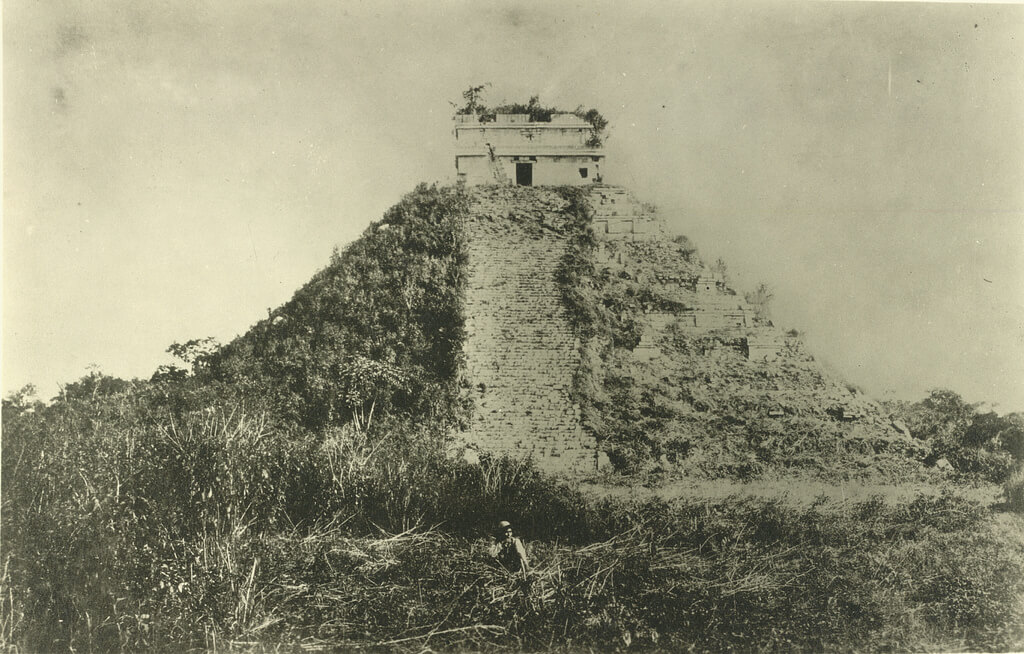
Pyramid of Kukulkan, 1895. After only slight work done to clear vegetation, mostly along the staircase. Courtesy of Cornell University Library.
The Legend of Chichen Itza
Located just 40 minutes from Valladolid, Chichen Itza is a central figure in Yucatan and Mayan lore. This center of Mayan rule remained so until the mid-16th century, before Francisco de Montejo the Younger and his group of Indo-Spanish conquerors gained total control over the peninsula.
What happened over the next 300 years remains up for debate, but by 1860 French explorer Désiré Charnay surveyed Chichén Itzá and took numerous photographs that he published in Cités et ruines américaines, published in 1863. By this time, Chichen Itza had undergone a period of forgetfulness, having been reclaimed by the dense Mayan jungle that surrounds it.
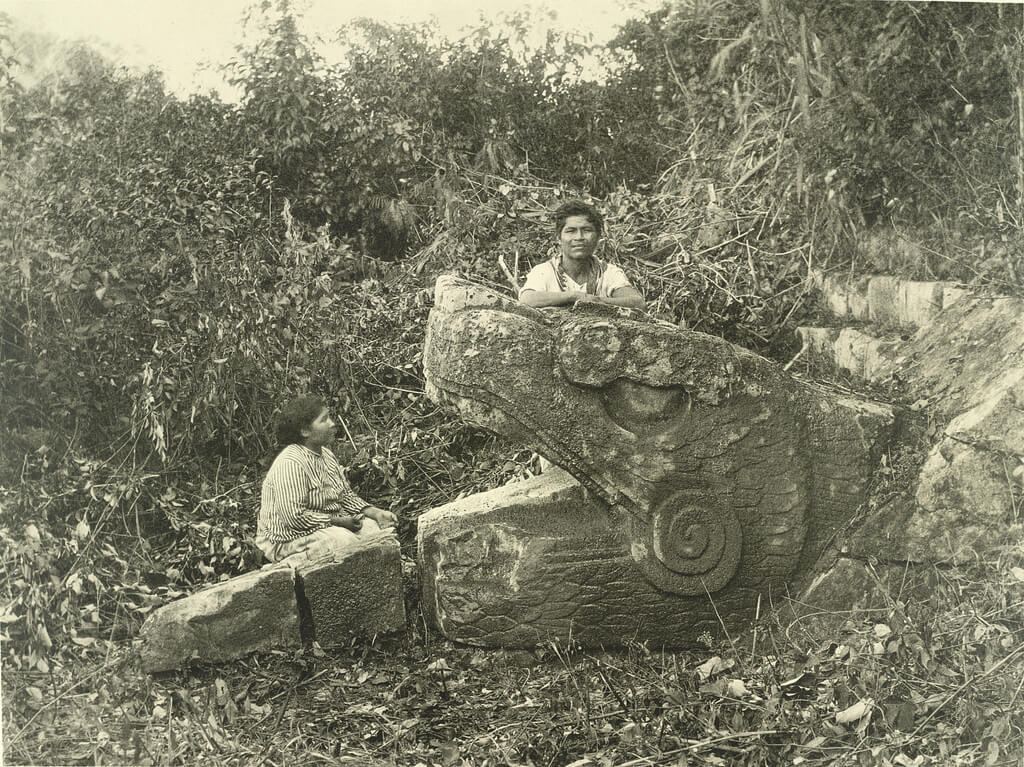
The serpentine base of El Castillo, 1895. Courtesy of Cornell University Library.
The evidence in Charnay’s work showed Chichen Itza nearly completely covered in forest brush, and the great Pyramid of Kukulkan only distinguishable from the wilderness by the few feet of original stone visible at the apex.
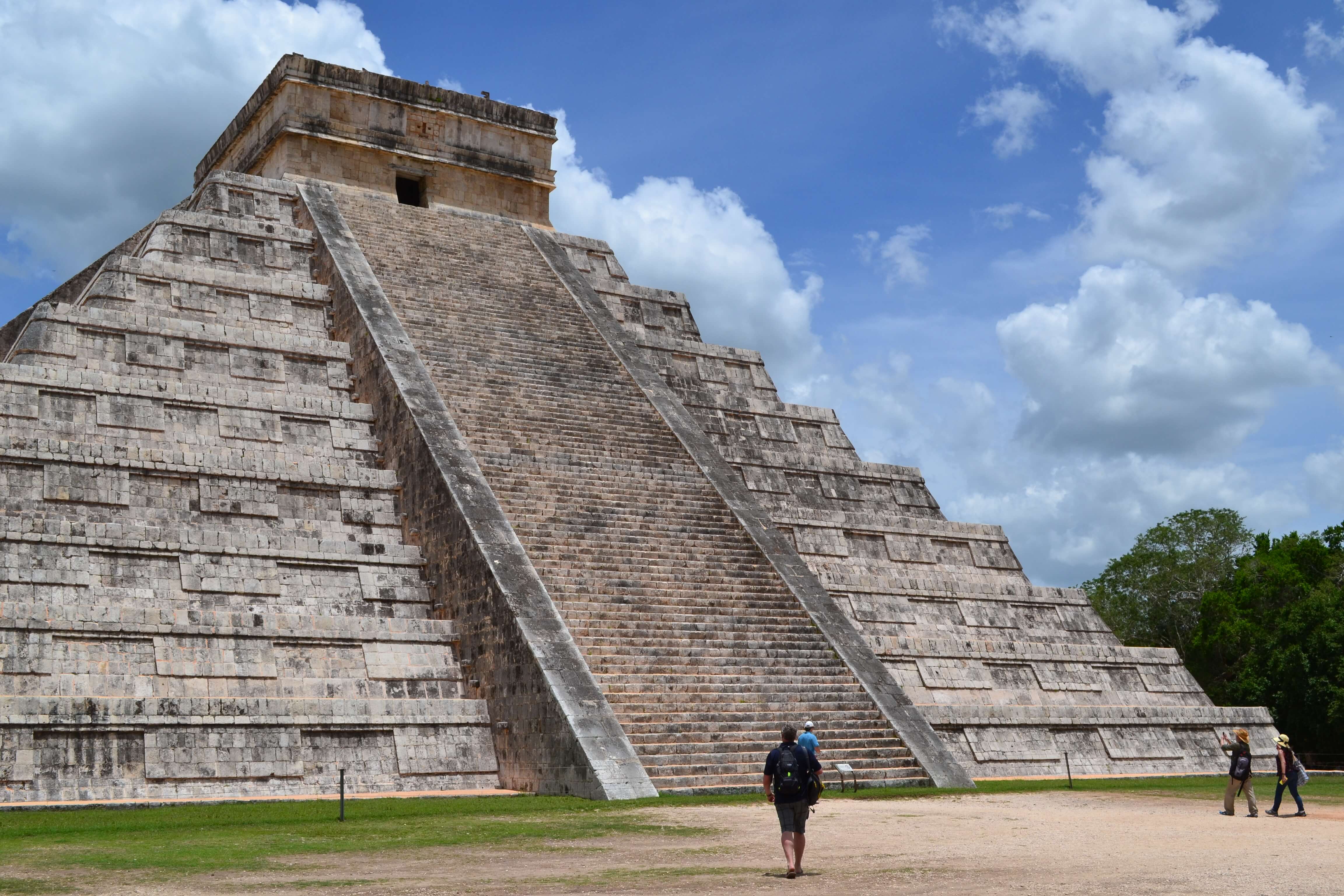
Chichen Itza Today
However, Chichen Itza has retained its former glory, now standing as a pristine gem among western archaeology for both historians and tourists, thanks to excavation work began in 1923 by the Carnegie Institution. This work has led to the uncovering of Mayan relics, history, rites, and legends which have captured not only the imagination of the avid historian, but of the general public. Today, Chichen Itza stands shoulder to shoulder with mammoths of historical ruin, such as Machu Picchu, Petra, and the Giza Pyramids in Egypt.
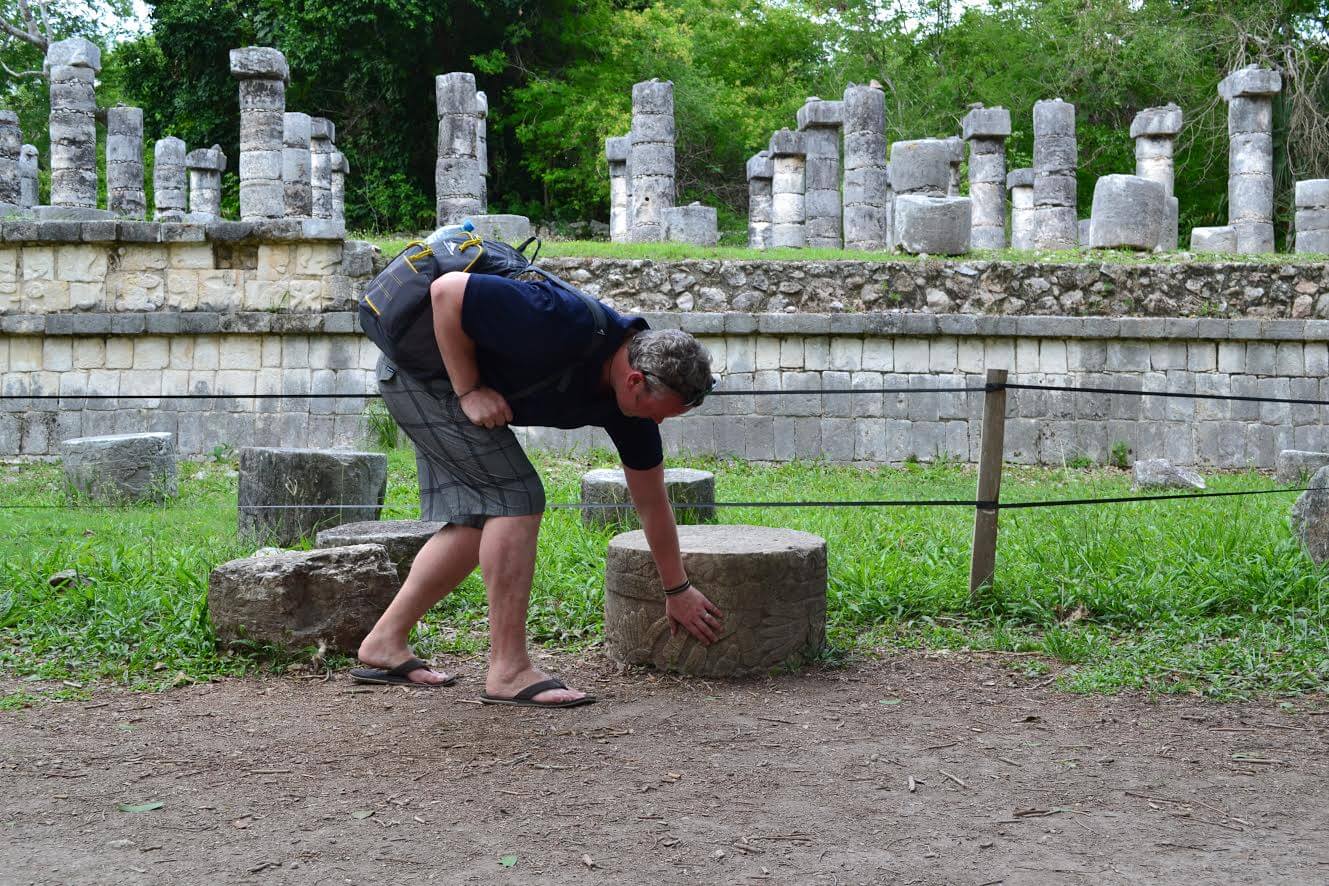
So, what is it like to see Chichen Itza? Where does it rank among the great archaeological finds of recent memory? We had the opportunity to visit this majestic Mayan city, to touch the stones, and to marvel at the architectural achievement that is Chichen Itza, and admit it deserves its place among those aforementioned cornerstones of history.
How To Visit Chichen Itza
Chichen Itza is located in the western-central area of the Yucatan Peninsula, just over 90 minutes from the largest city along the west coast, Merida. Flying into Merida is the easiest way to reach the ruins, as from there you can simply cab or rent a car. If your plan is to travel the entirety of the Yucatan, we recommend renting a car. However, if you happen to the traveling to Chichen Itza, staying there, and staying close to the area, a cab will do.
In the area, there are several accommodations at Chichen Itza for travelers of all budgets. Our recommendation is also the first hotel built in the area, the Mayaland Hotels & Bungalows, built in 1923. This is a budget hotel that doesn’t feel like one, complete with open-air bungalows and a very historic feel that is very much true to the Yucatan. In fact, Mayaland is still owned and operated by the same family that opened it nearly 100 years ago. From any of the local hotels, you can get a very inexpensive cab ride that will take you within the entrance gates.
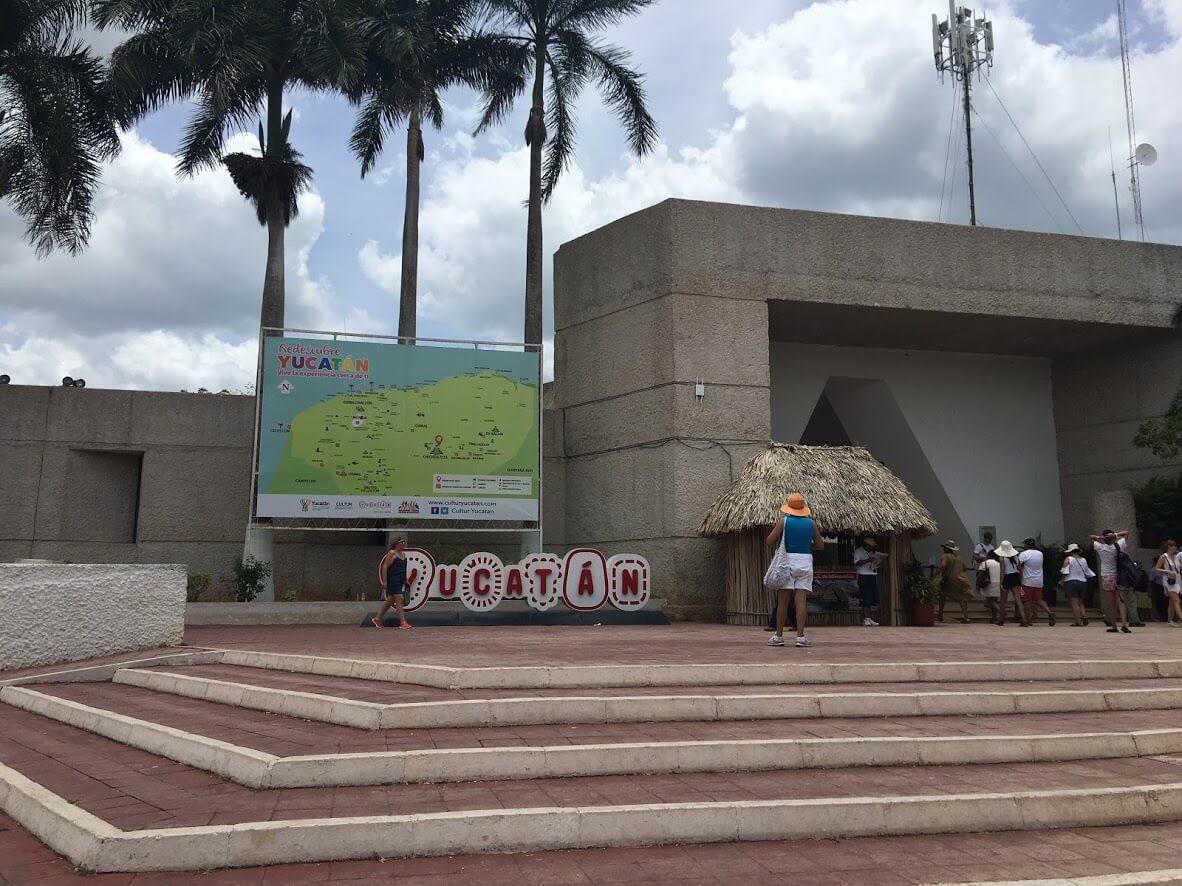
Entry to Chichen Itza.
When you spend your day at Chichen Itza, keep in mind that it is hot, with summertime temperatures regularly soaring above 100 degrees Fahrenheit. Being properly prepared for this is something that can either make or break having an enjoyable experience, as the intense Yucatan heat can be dangerous for those not physically equipped to be in this type of environment for long periods.
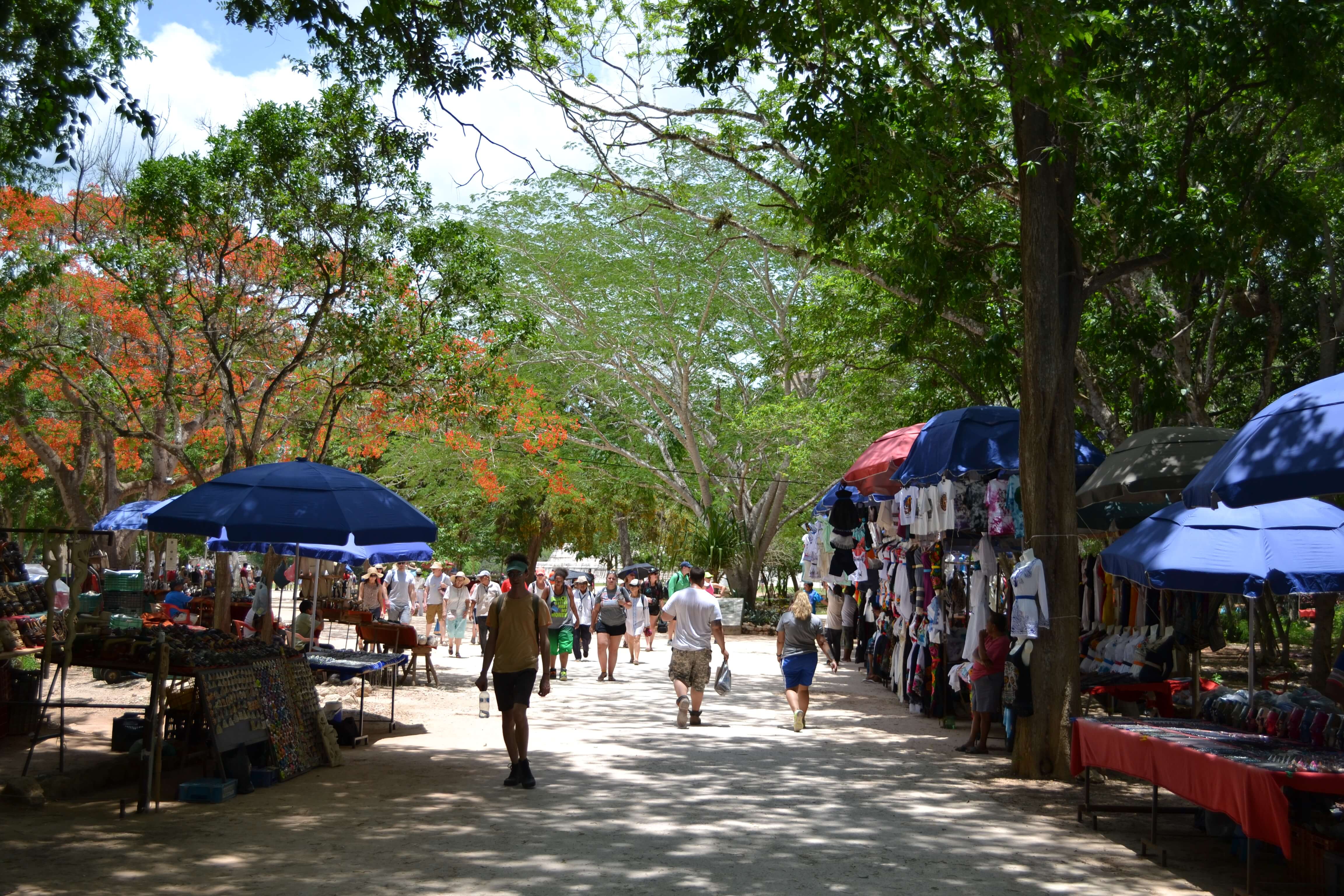
Rows of vendors upon entry to Chichen Itza.
Though water and snacks are available at entry, there is little available once you enter the grounds, and you’ll need several hours to properly see all there is to see. Bearing this in mind, you’ll want to bring a backpack with several large bottles of water, as well as some snacks to stave off hunger. While you can’t climb on any of the structures, there is a fair amount of walking with only moderate opportunity for shade in many sections of the city.
You’ll want to recognize that this is, in fact, a city – not simply one pyramid. There are myriad opportunities for photography, so make sure your batteries are charged! Not only are the large structures incredible opportunities for shutterbugs, but also are the tiny details. Stones that have tumbled over time, iguanas and other wildlife engaged in horseplay, as well as the opportunities for framing and contrasts of colors and shades at Chichen Itza make this a photographer’s dream shoot.
Things To See At Chichen Itza
The main attraction at Chichen Itza is El Castillo, the grandest structure in the city. More formally known as the Pyramid of Kukulkan, this limestone step-pyramid stands 98 feet from ground to temple, and was first described by Friar Diego de Landa in the manuscript Relacion de las cosas de Yucatan, after his return to Spain following the conquest of the Yucatan.
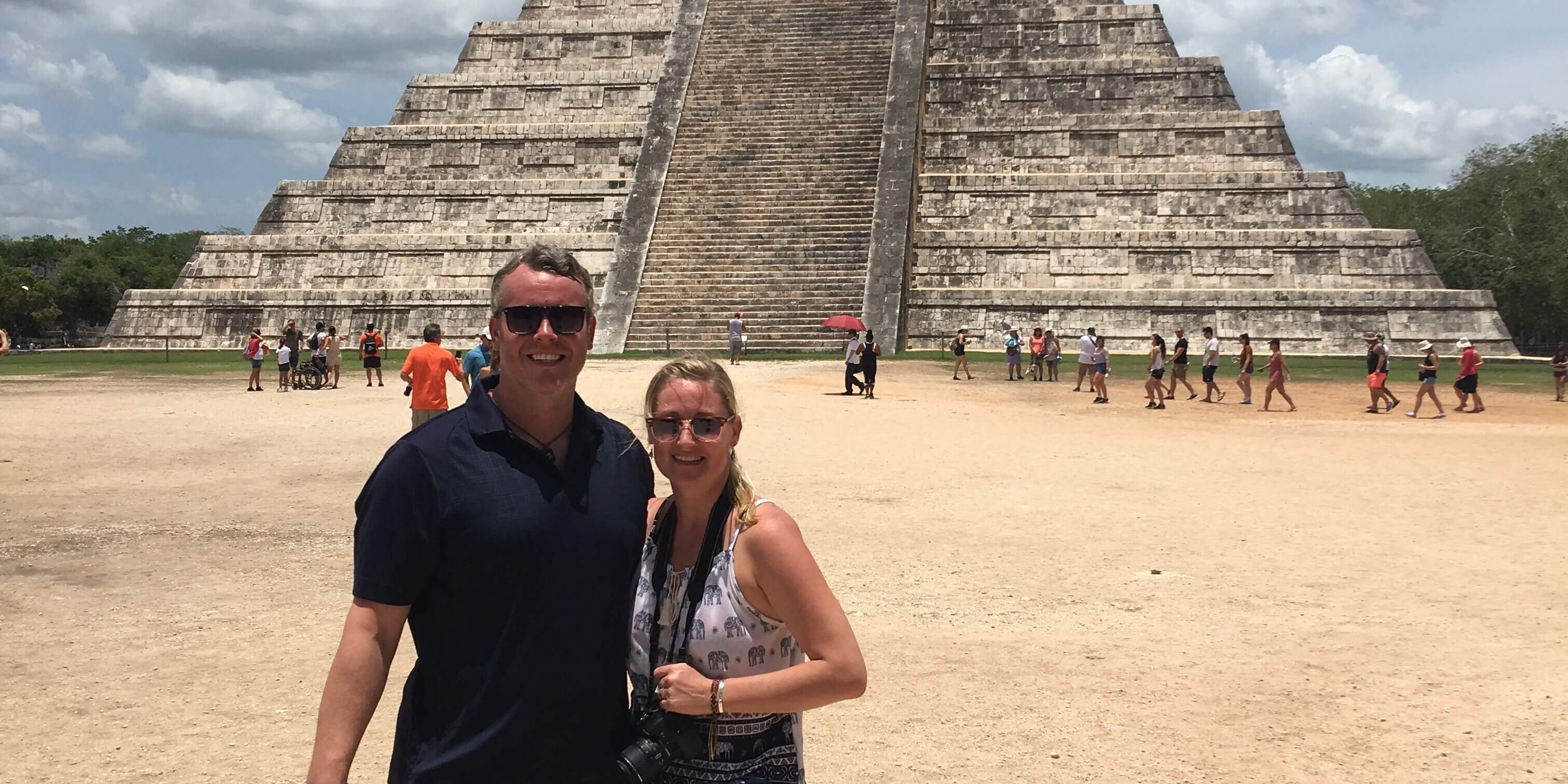
Chichen Itza makes for a great cover photo!
El Castillo dominates the North Platform of Chichen Itza, and stands as a megalithic greeting to the patrons entering the city. Emerging from the trees, El Castillo becomes visible through the branches only briefly in the last instant before entering the openness of the main courtyard. There are many interesting features of note at El Castillo, including the serpentine figures that seemingly crawl down the staircases during afternoons on the spring and autumn equinoxes, ending at the balustrades in a stone likeness to their snake God Kukulkan.
El Castillo exemplifies another standard of Mesoamerican pyramidic architecture, wherein the builders would superimpose a larger pyramid over a smaller – often the site of the more important and secretive religious ceremonies. In the mid-1930’s this was confirmed to be the case at El Castillo, when an excavation revealed a hidden stairwell at the top of the pyramid, leading down to a smaller replica pyramid inside of the exterior structure.
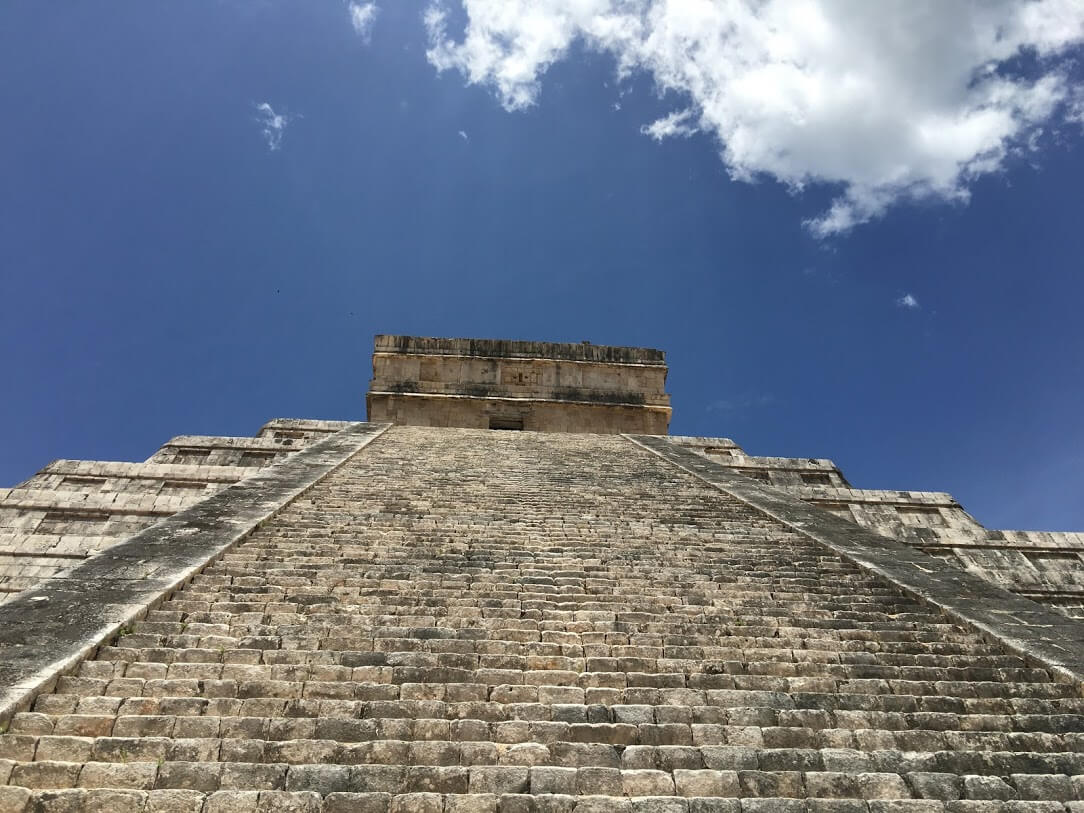
There is no bad view of El Castillo, especially the closer you get.
El Castillo is a true marvel from all sides, however, and you’ll want to take your time walking around and enjoying the various angles of this structure despite the inability to actually touch it or crawl on it. When it was possible, the pyramid created quite a challenge as it featured 365 steps to the apex (one for each day of the year). This was exemplary of the Mayan fascination and expertise in understanding the movement of the heavens, which was paramount in their creation of the Mayan calendar.
The Great Ball Court
The second most important site at Chichen Itza, and one of macabre historical importance, is the Great Ball Court.
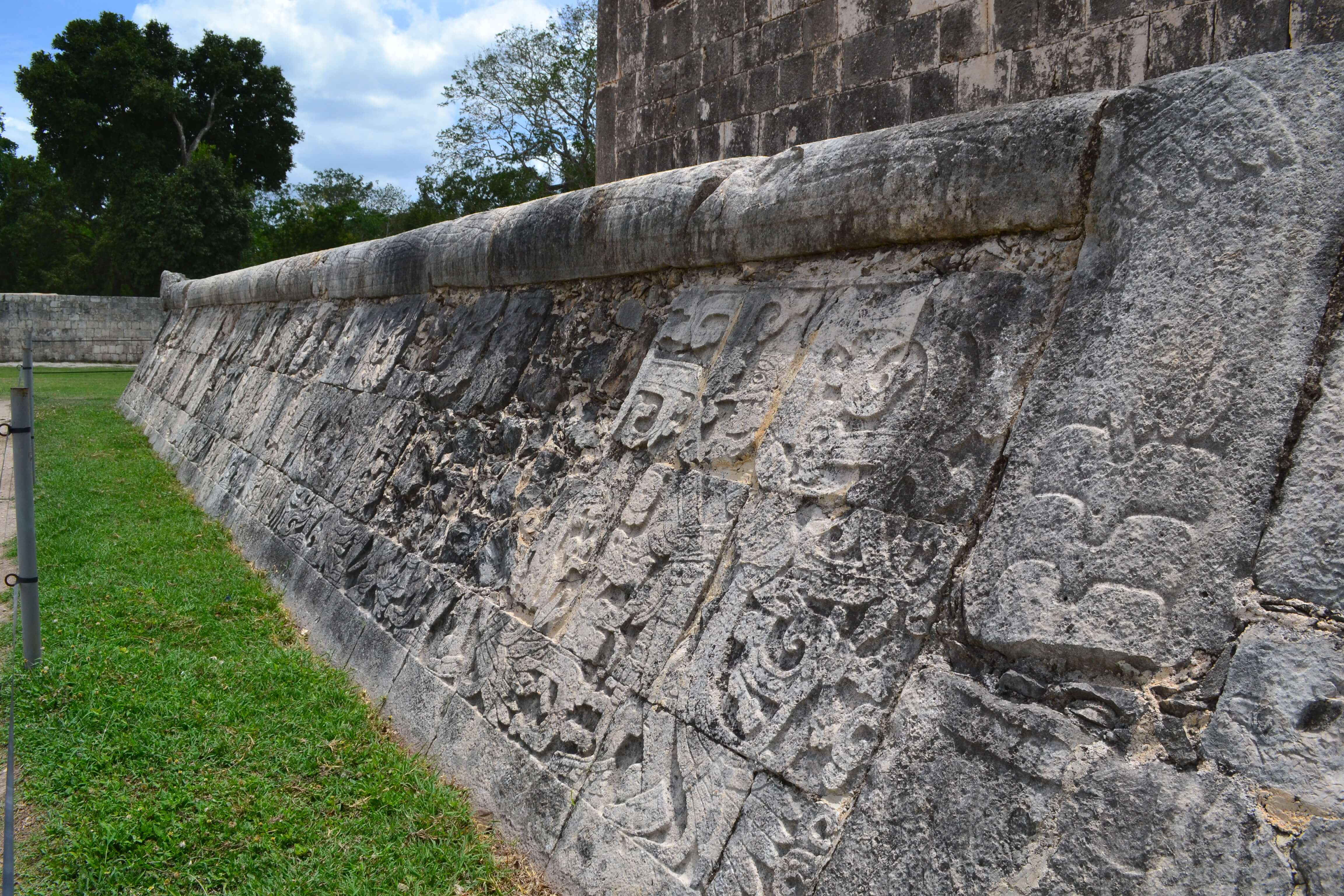
Etchings along the walls entering the Great Ball Court.
The largest of 13 identified ball courts at Chichen Itza, the Great Ball Court was the site of the ancient Maya ballgame called pitz, a major part of political, religious, and social life. Played with a rubber or stone ball ranging in size from that of a softball to a soccer ball. Players would attempt to bounce the ball, without using their hands, through stone hoops attached to the interior walls of the ball court.
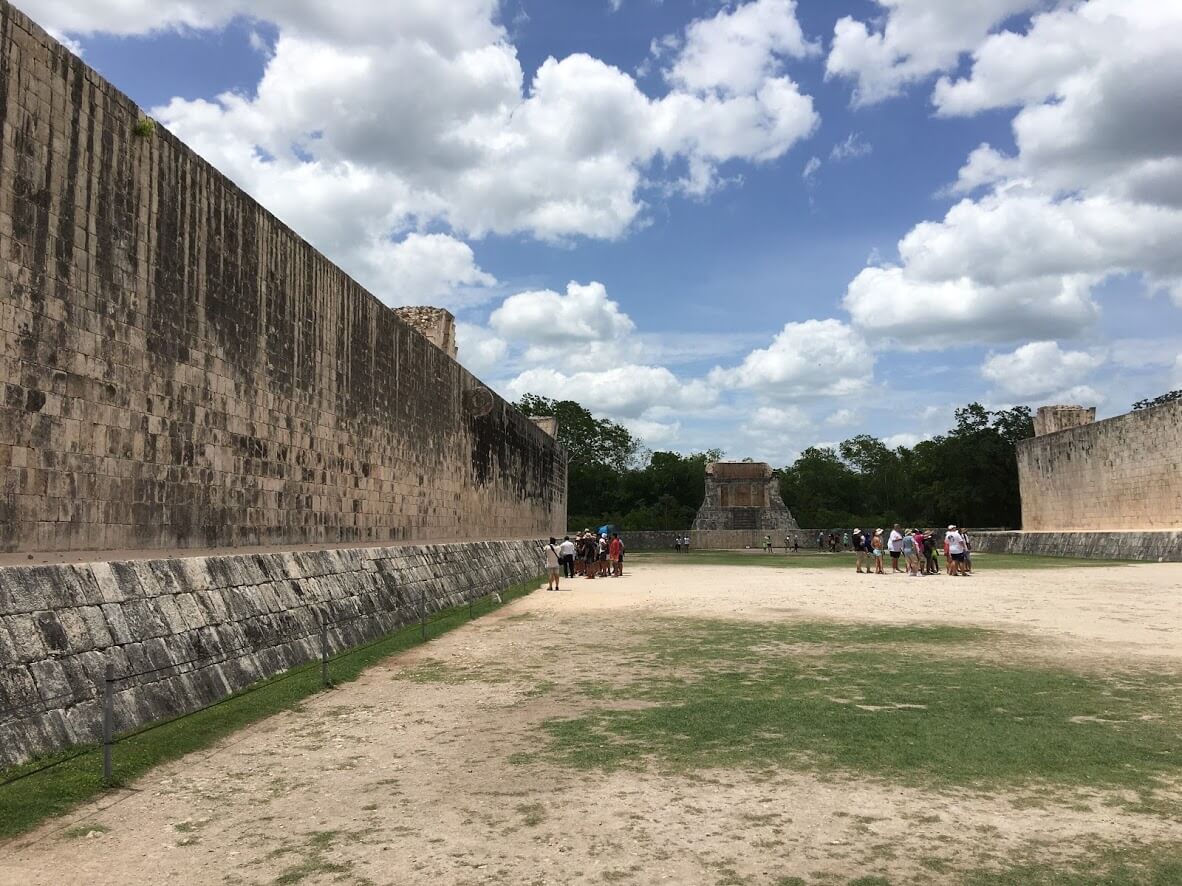
The Great Ball Court.
The Mayan ball games were far more than simply leisure or social in nature, however. Often, these games were done as a testament of social importance for individual or, in more terminal cases, a fight for life. The ballgame provided an opportunity to show devoutness to the gods by sacrificing the losing opponents of the game and, in some cases, the winners. The Maya believed this devoutness would prove to the Gods their loyalty and strength of belief, resulting in avoidance of droughts and prosperity for the city and its inhabitants.
The far end of the temple is an impressive, small masonry building called the Temple of the Bearded Man. Given the vantage point of the building, aligned with the center of the ball court, it’s believed that this temple was provided for royalty or invited guests to view the game. Beyond this temple is the Wall of a Thousand Skulls, a testament to the sacrificial nature of the ball court and the importance of the games themselves.
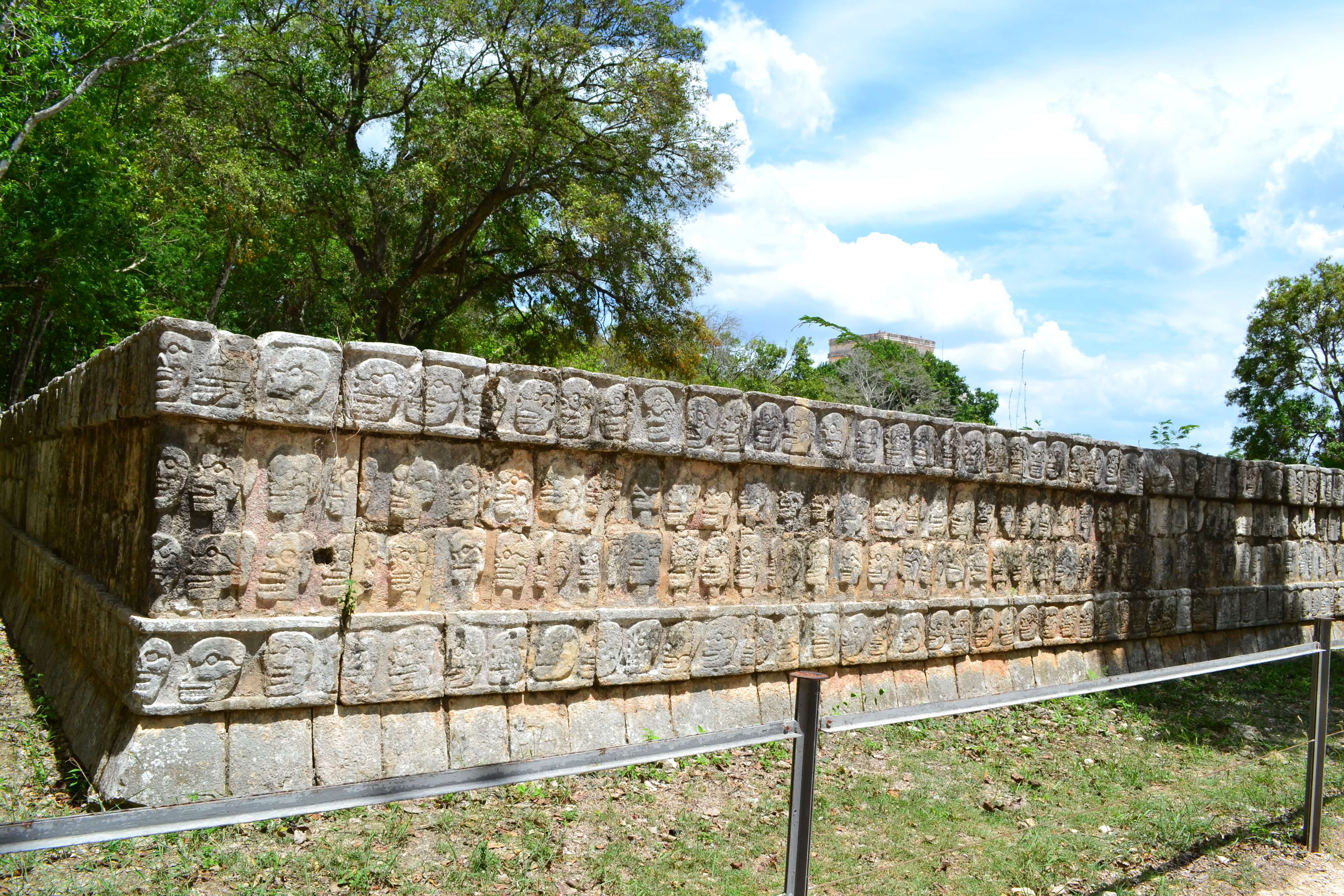
The ominous Wall of a Thousand Skulls.
As you walk along the grass of the court, there remains an eerie feeling of power than encapsulates you as you realize the origin of the area, as well as the purposes for which it was built. Other observatories and temples sit atop the wall facing El Castillo, provided likely as seating for royalty, and one can almost see those eyes glaring down in observation.
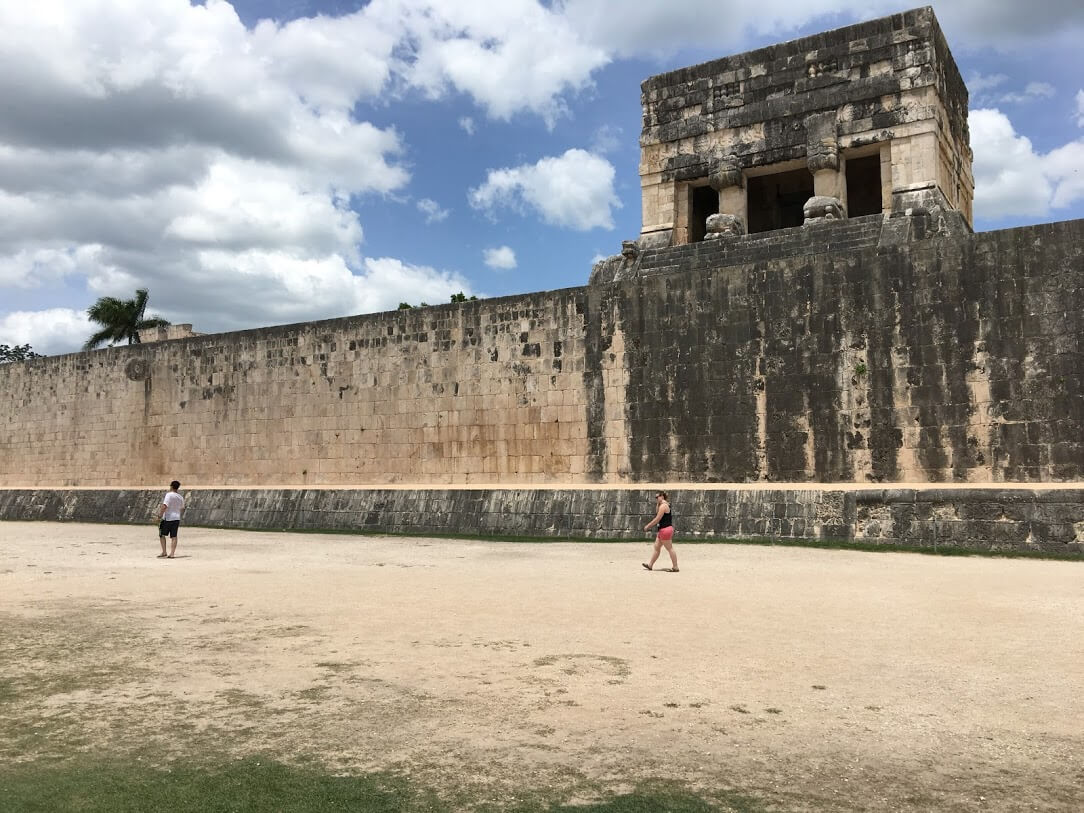
The side temple as you enter the Great Ball Court, site of an observatory and possible sacrificial location.
While El Castillo and the Great Ball Court stand as the two most popular attractions at Chichen Itza, there is far more that lends to the credibility of this city as one of the most fascinating ruins in the world.
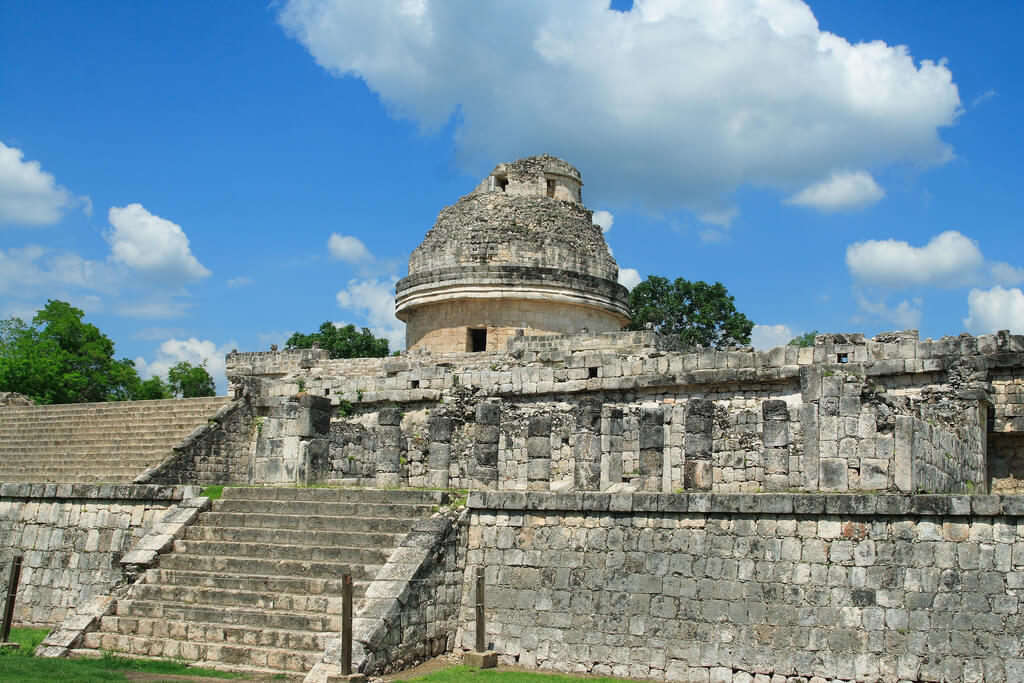
El Caracol – The Observatory
The building named The Snail (El Caracol) was an observatory built by astronomers at Chichen Itza whose knowledge of the celestial bodies led to the creation of the Mayan calendar.
Two windows in the tower line up with Venus’ most northern and southern setting points, while the corners of the Observatory’s platform align with sunrise during the summer solstice and sunset during the winter solstice. The building is called The Snail because inside the cylindrical tower is a spiral stairway to the observatory area, all built by the Maya.
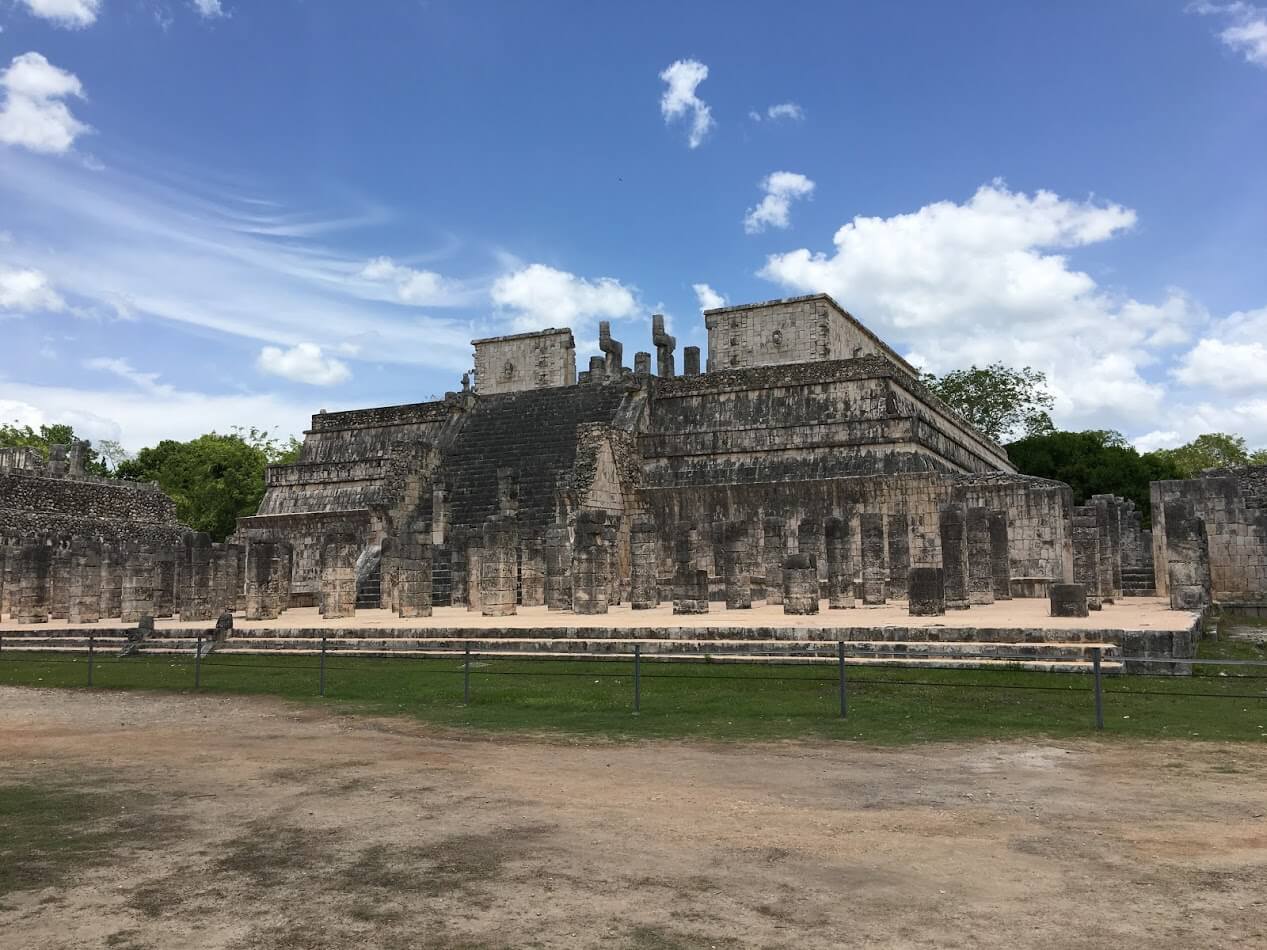
Temple of the Warriors
Just beyond El Castillo, near the back of Chichen Itza, lies the Temple of the Warriors. This is a large, stepped pyramid flanked by the Group of a Thousand Columns – stone columns standing on end that represent Mayan warriors.
More of the ornately carved structures at Chichen Itza, the temple and the columns that surround it are filled with low-relief carvings depicting warriors, battles, and serpentine imagery in honor of the Gods.
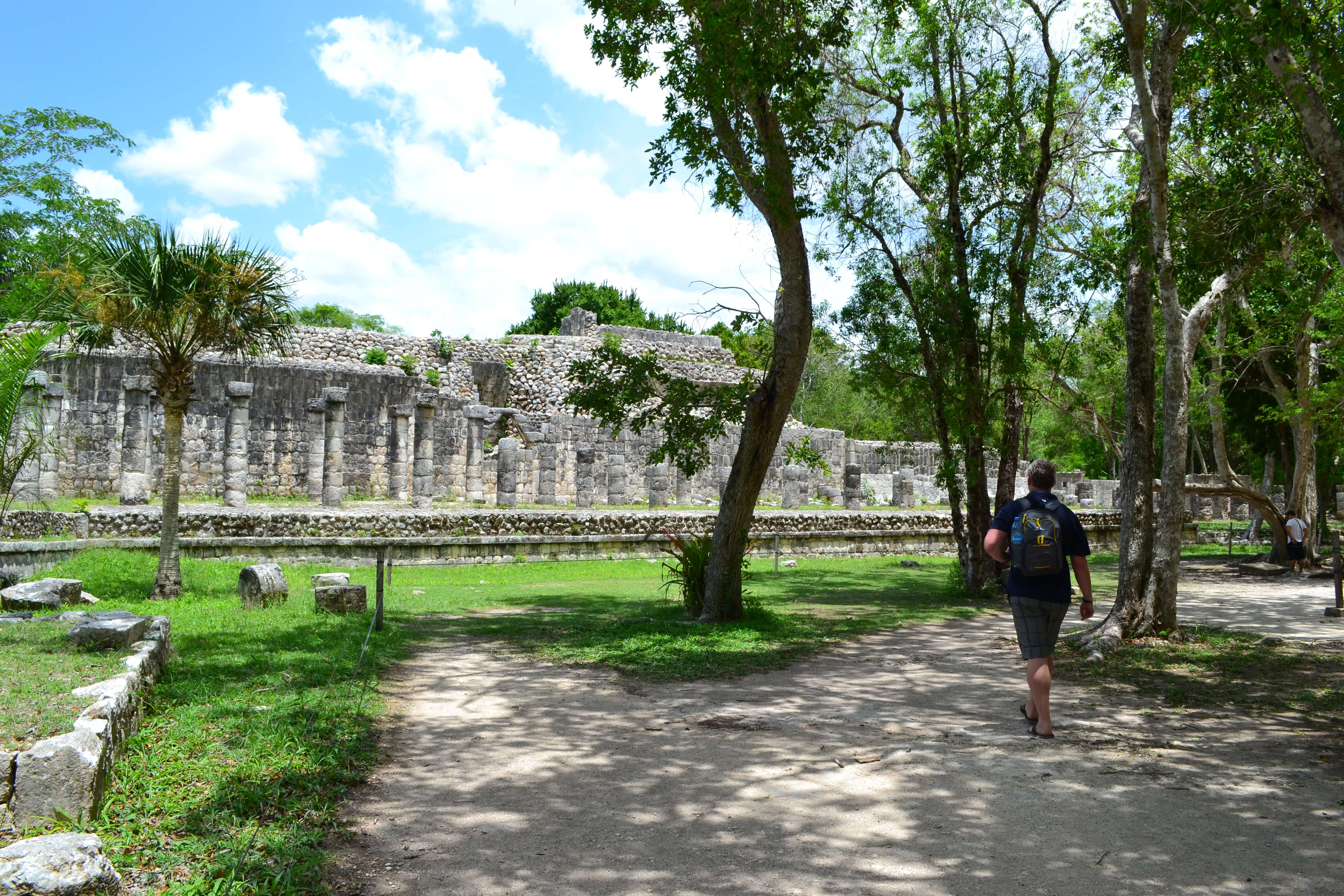
A casual stroll enjoying the Group of a Thousand Columns.
The Temple of the Warriors encases the primary structure, called The Temple of the Chac Mool. Chac Mool is an important Mesoamerican character, considered part deity and part religious paraphenalia used by priests during their ceremonies.
Understood to representative of acts of giving to the Gods, Chac Mool is always depicted in a semi-reclined position and the details of which are still not fully understood. Was it perhaps an ode to the changing of seasons, to the Winter and Summer Solstices? We cannot fully know. What we do know is that Chac Mool is found throughout Central America, and is deeply tied to Mesoamerican culture. This same representation can be found throughout ancient civilizations, such as Tikal and Tenochtitlan.

The Thousand Columns, up close.
It is believed that the columns surrounding the Temple of the Warriors, though exposed today, were once supportive of a large roofing structure that wrapped around the grounds. Beyond this temple and columns, a casual stroll to the back of the complex reveals additional minor ball courts and small carvings exemplary of the area.
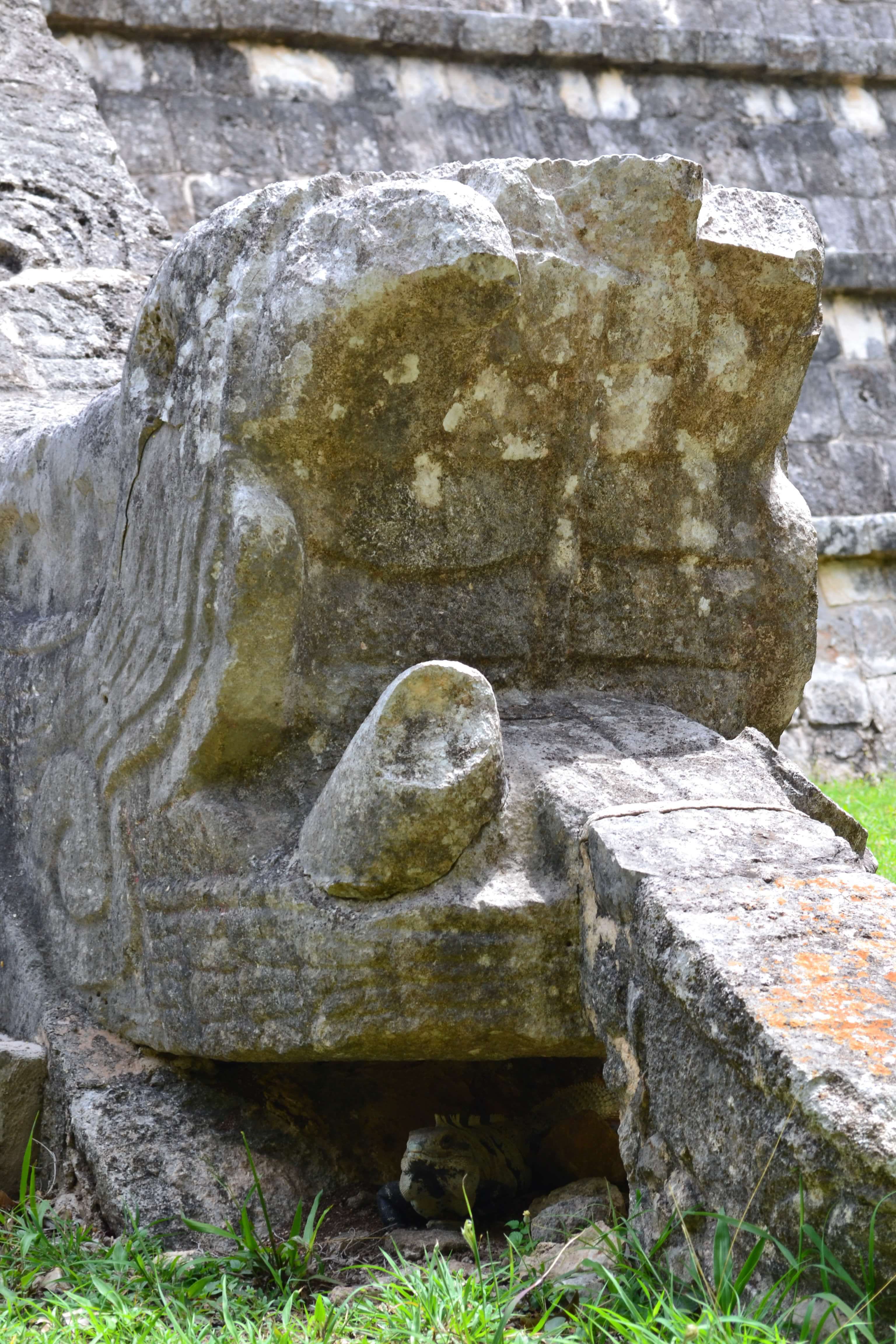
Lizard under lizard at Osario!
The Osario, Temple of Xtoloc, and more!
The second-largest stepped pyramid at Chichen Itza, The Osario has much in common with El Castillo, though smaller, as there is a temple on top from which four staircases work their way down. Unlike El Castillo, the center reveals an opening into the pyramid which leads to a natural cave 40 feet below.
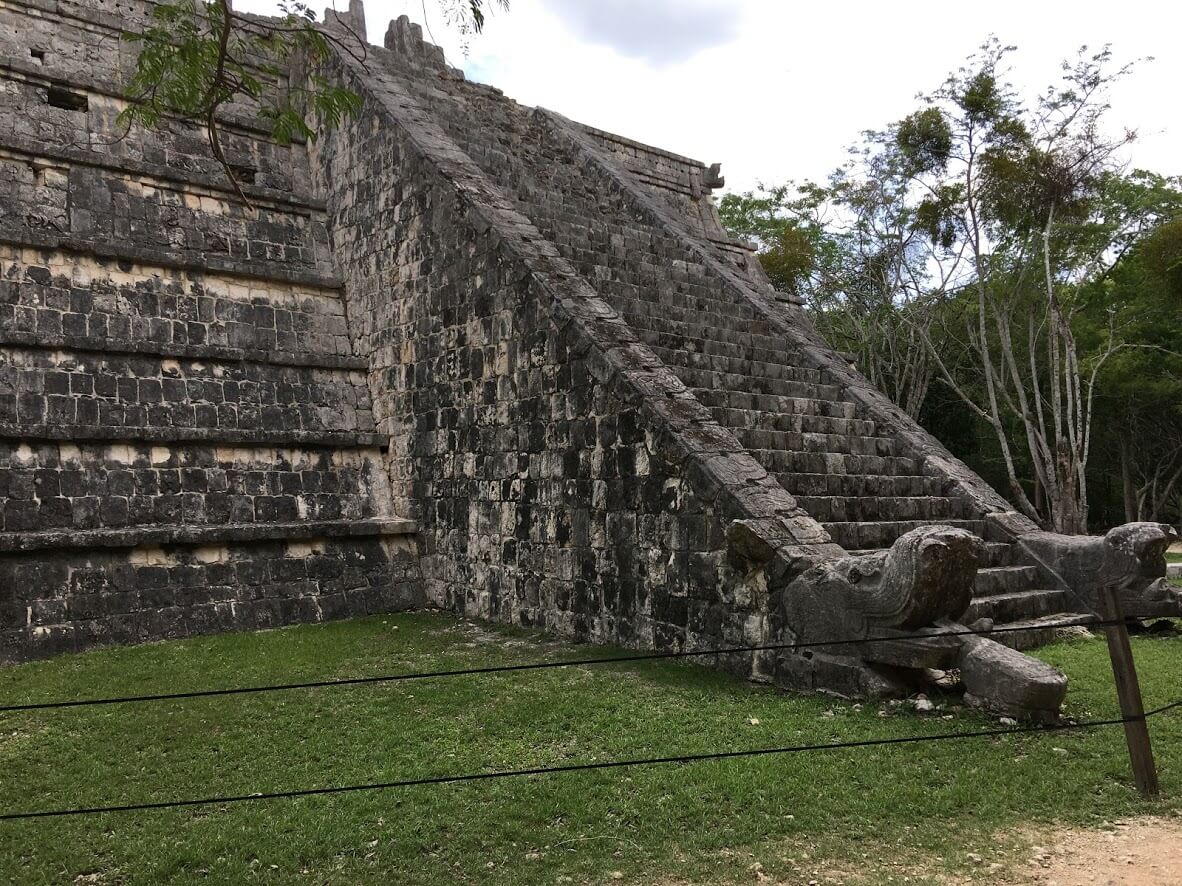
The Temple of Xtoloc, near the Osario Platform, is a recently restored temple that overlooks the second-largest cenote at Chichen Itza, named after the Maya word for iguana, “Xtoloc.” The temple contains pilasters carved with images of people, as well as representations of plants, birds and mythological scenes.
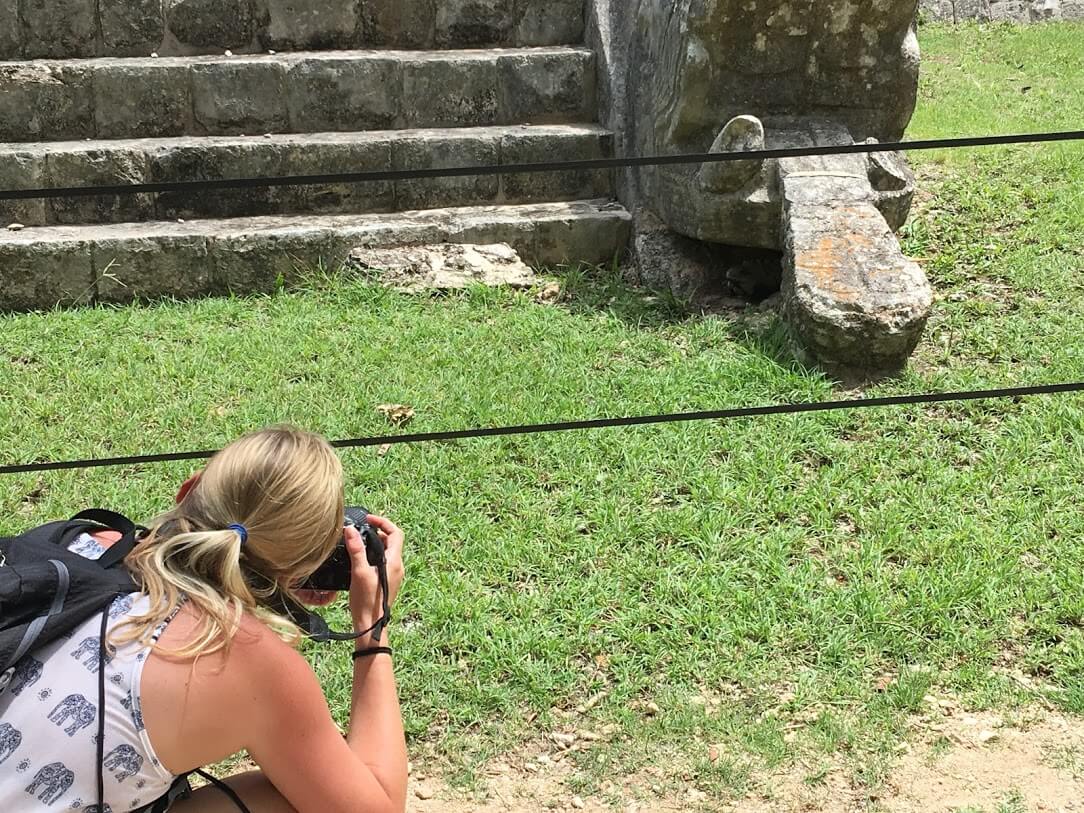
Between the Xtoloc temple and the Osario are several aligned structures: The Platform of Venus, the Platform of the Tombs, and a small, round structure that is unnamed were all secondary or tertiary religious platforms for celebrations and ceremonies.
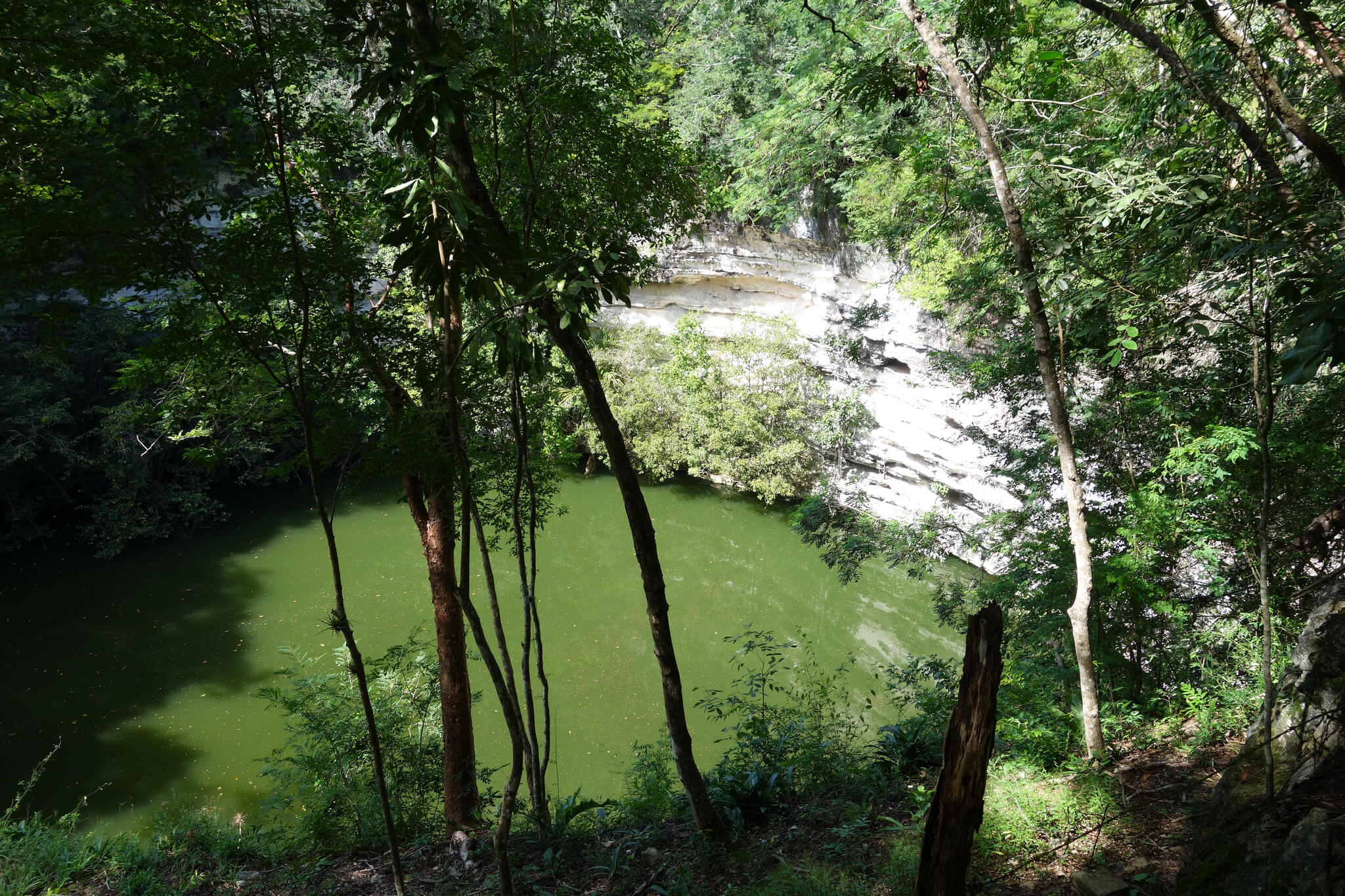
Sacred Cenote and Cenote Xtoloc
Chichen Itza is also the site of two highly-important cenotes – Sacred Cenote and Cenote Xtoloc. Sacred Cenote is the most important of all cenotes in the Yucatan, as it served as the primary sacrificial location in Chichen Itza.
The sacrifices, both animal and human, would take place in Sacred Cenote as a way to stave off drought through the Gods’ blessings. In recent years, exploration in the area have uncovered human remains deep in the cenotes on natural rock platforms. These are likely indicative of a potential cause of the disappearance of the Maya, as drought would have led to a decrease in cenote water levels, which were essential to Mayan survival. Sacrifices in this area would have been an obvious plea to the Gods to lessen the effects of drought.
Today, both Sacred Cenote and Xtoloc are popular spots for tourists speaking a place to cool off, with Sacred Cenote the site of many cliff diving competitions!
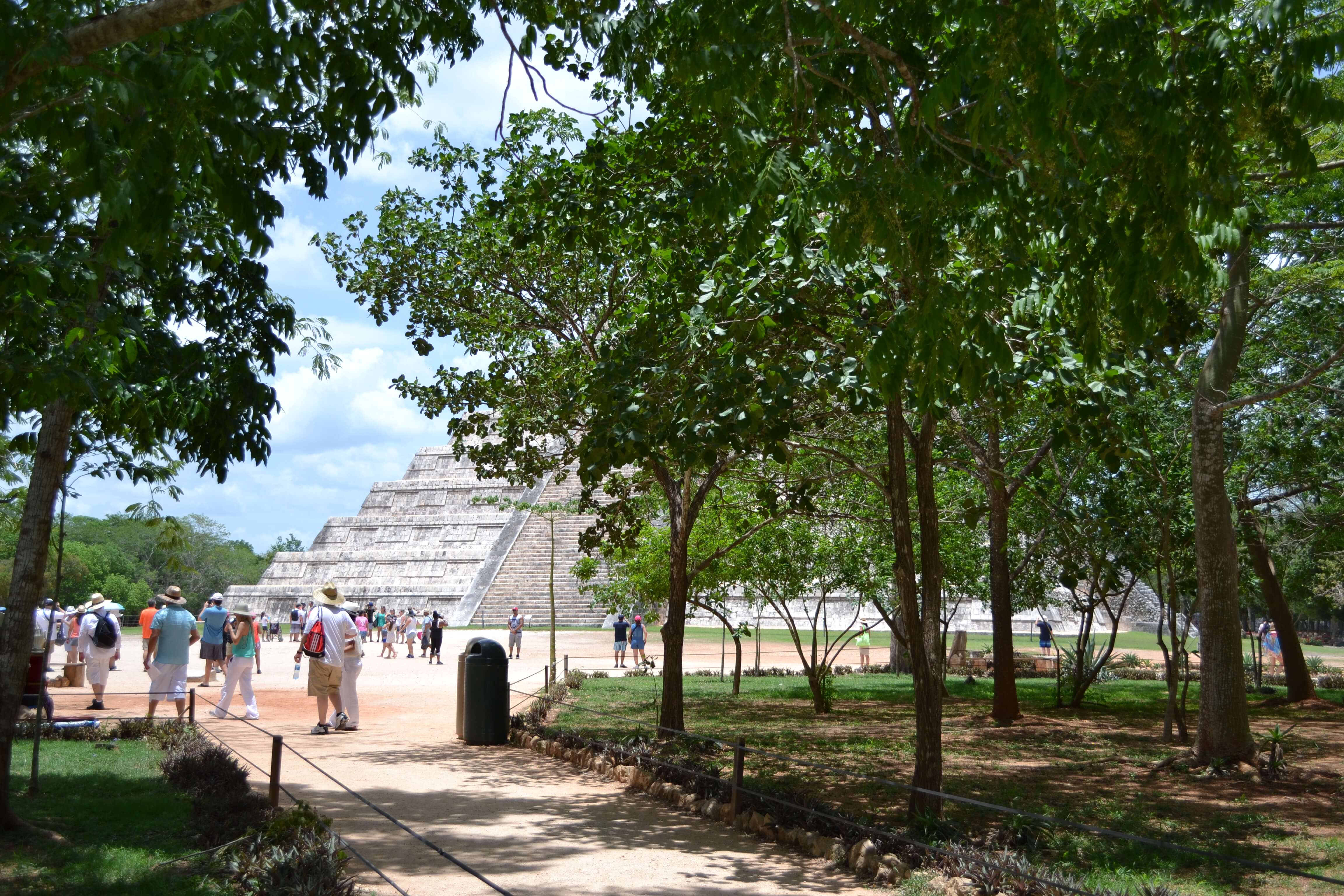
Chichen Itza awaits upon entry…
Make History at Chichen Itza
Whether a history lover, a traveler or simply someone who appreciates ancient culture, Chichen Itza is a must-visit. It has taken its place among the New 7 Wonders of the World, to be put alongside the Taj Mahal, Machu Picchu, or any other ancient site in the world.
Come here to explore the center of Mayan culture in the Yucatan Peninsula, to be wowed by the city and wooed by the echoes of history.

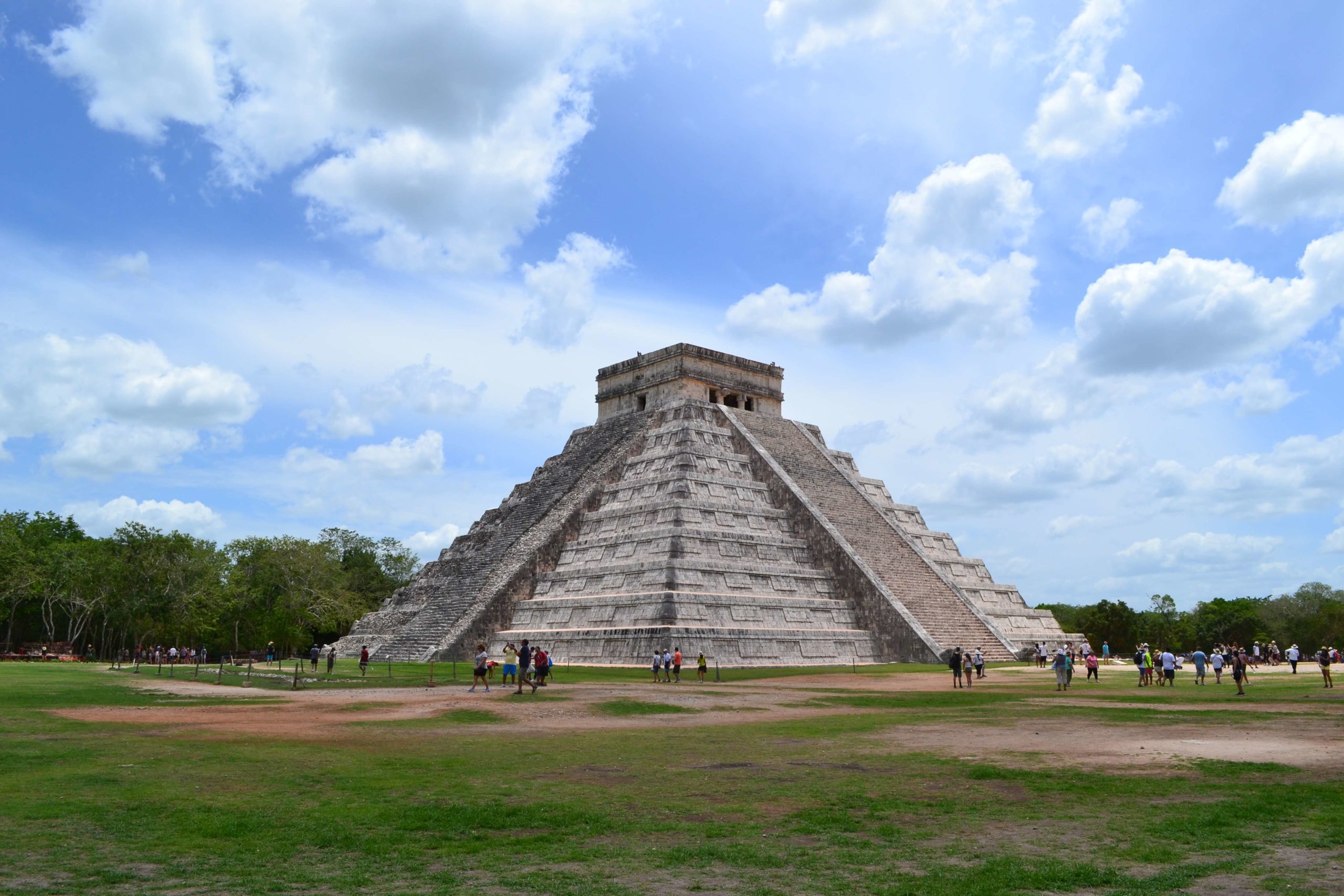
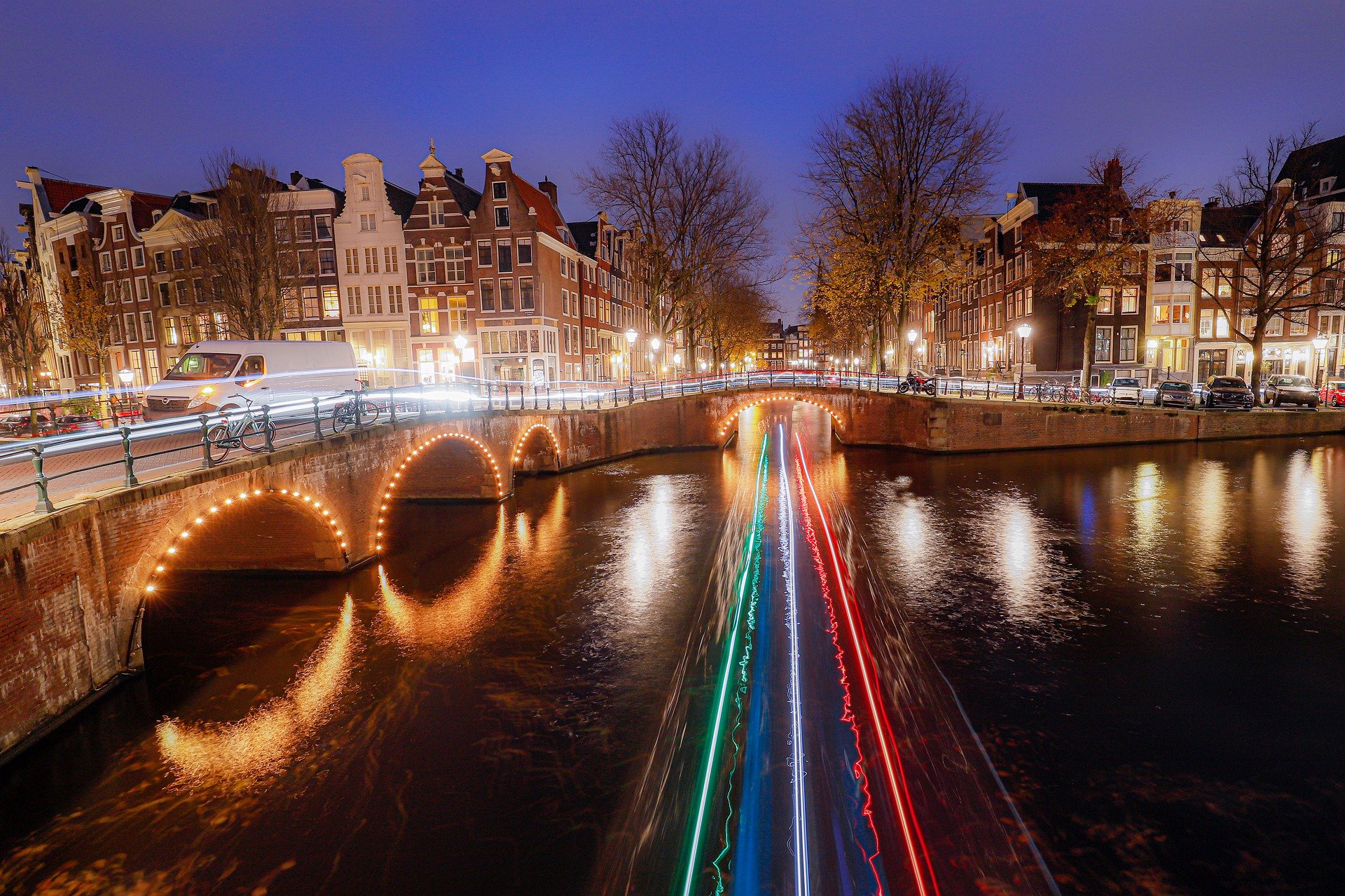
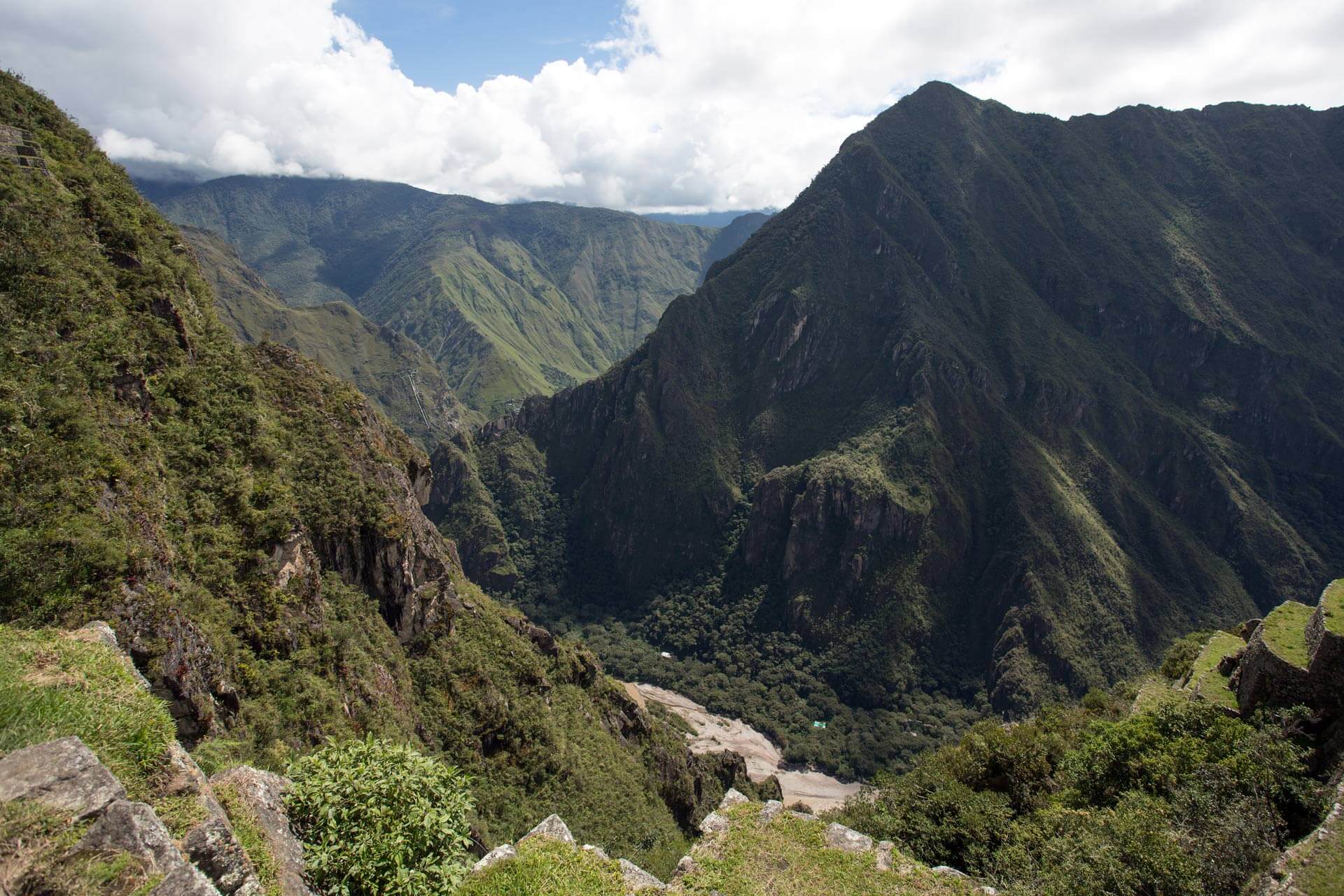
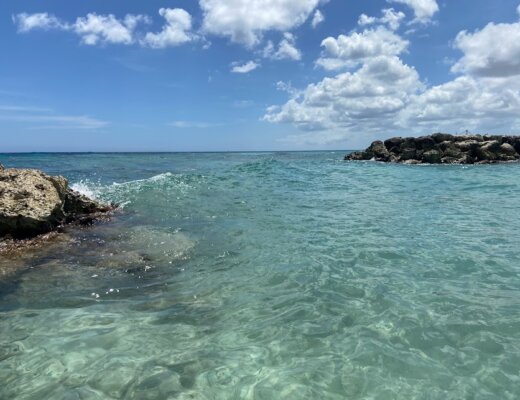
Cindy Mathew
June 24, 2017 at 11:36 amOMG! This post reminds me so much about by quick tour to Chichen Itza. It was an incredible sight-seeing tour as I enjoyed every bit of it though it was a short one. I can’t still forget the tall Pyramid of Kukulkan which was the first sight that welcomed us to the city. I can’t just stop myself from seeing this city once again; this post reminds me I still have a lot more to see.
Justin & Tracy
June 25, 2017 at 9:00 amThanks Cindy! Glad you enjoyed the post!